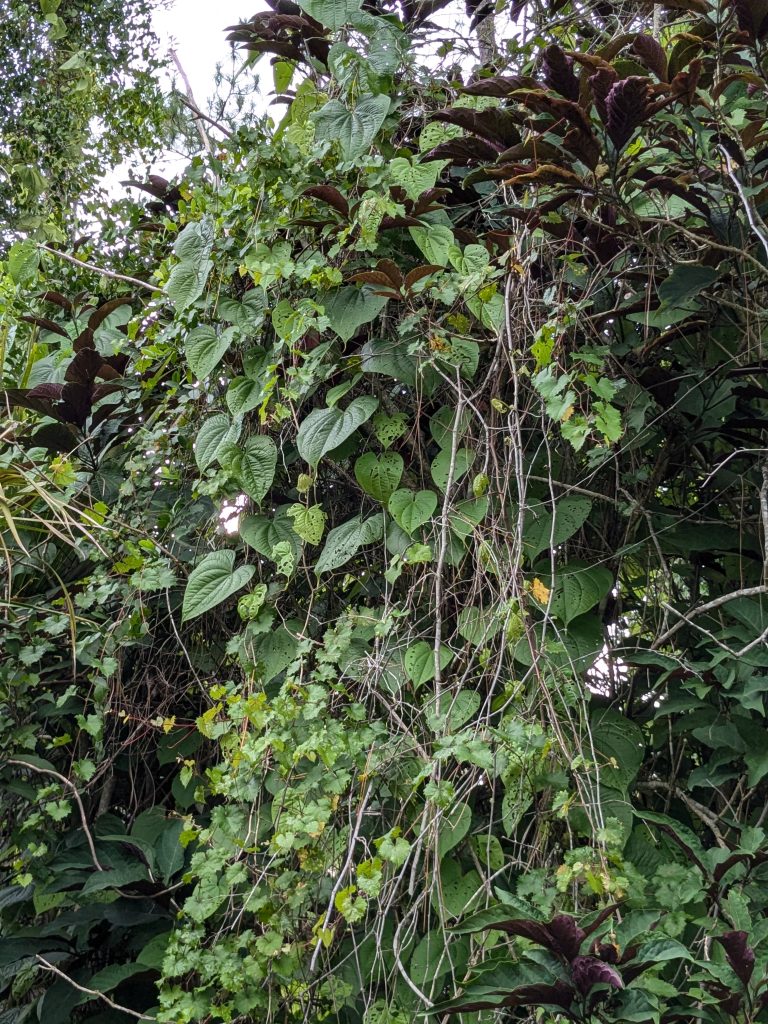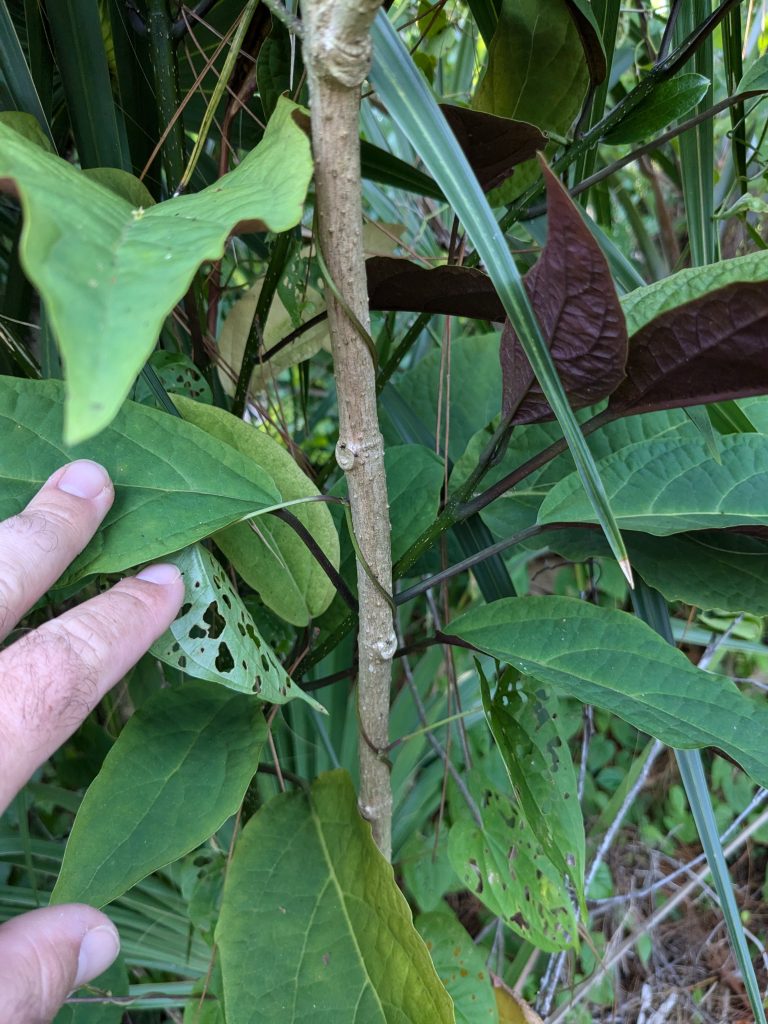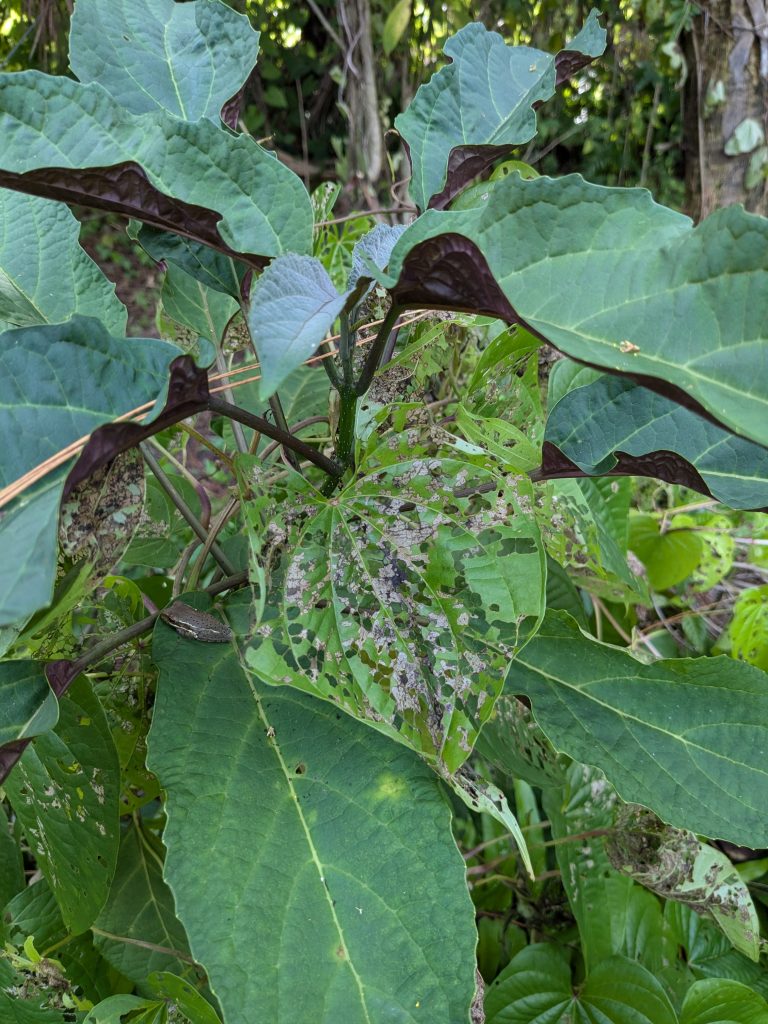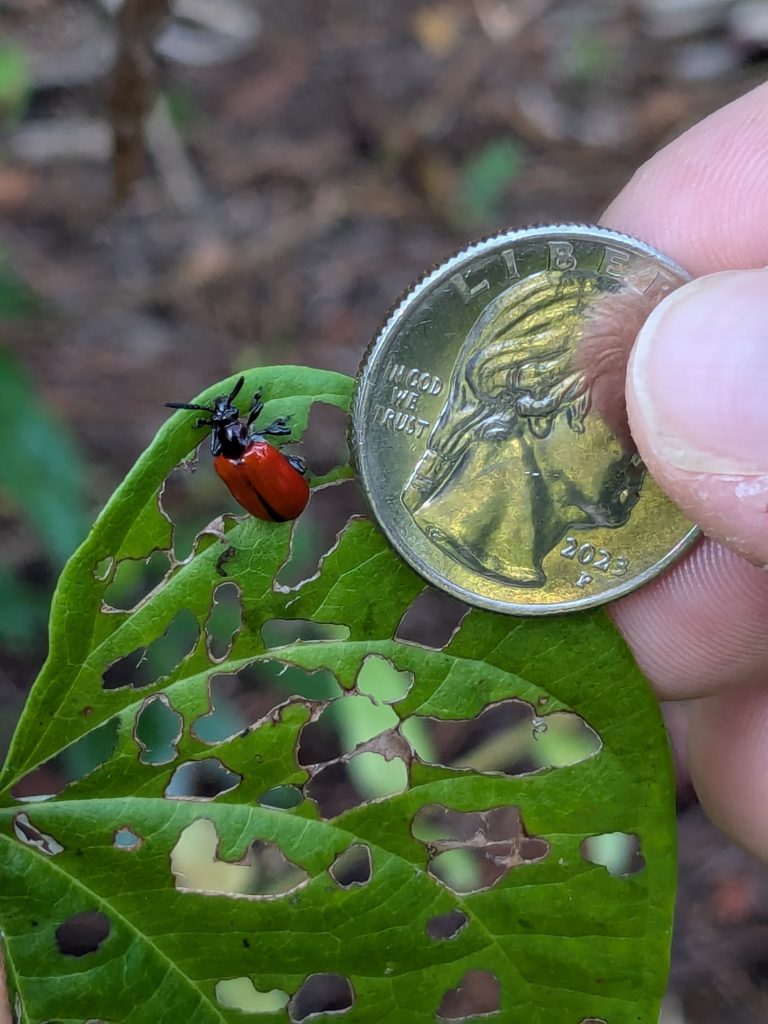Introduction
Of all the invasive plants to deal with in our Collier County backyards, the air potato vine (Dioscorea bulbifera) may be one of the most frustrating to control. This invasive vine has a way of sticking around in the landscape by creating bulbils that drop to the ground creating a starting point for next year’s new growth. Unless you are vigilant and remove both the tubers in the ground and the bulbils on the vine, this plant will continue to populate and alter the habitat by creating dense mats and crowding out native plants as seen in image 1.

To distinguish this invasive vine from many of our typical South Florida vines look for heart shaped (cordate) leaves that come to a point, alternate leaf arrangement, vine stems that are smooth and curl around an object from right to left, and bulbils that are tan to dark brown in color. Make sure to look for more clues than just the heart shaped leaves since there are other cordate leaved vines such as the Dutchman’s pipe vine, morning glory, and winged yams that may look similar.


Biological Controls
On the bright side there are various control methods available, and one of the least environmentally impactful options you maybe seeing right now in your neighborhood. Introducing the Potato Vine Beetle (Lilioceris cheni) which was first released in Florida in 2012 and has become well established throughout Florida and Collier County. This beetle feeds solely on the Air Potato vine and creates holes in the leaves that impact the vine’s ability to photosynthesize and survive as seen in image 4. The eggs of the air potato beetle are deposited on the leaves and Lilioceris cheni has complete metamorphosis life cycle, meaning there are 4 distinct life cycles: egg, larva, pupa, and adults. Both the late instar of the larva and the adults are the most damaging stages to the air potato vine. The adults will live for about 5 months or more and typically will consume the newest growth first before migrating to older leaves. You can tell if these beetles are helping to control the population of this invasive vine in the area because the leaves of the Air potato will have several holes or will be almost completely skeletonized (only a few veins remaining). Since Lilioceris cheni is a specialist feeder on air potato vines, you do not need to worry if it will attack your other plants. In 2019, UF/IFAS and USDA concluded their collaboration with FDACS (Florida Department of Agriculture and Consumer Services) on the release program and as such these beetles are well established in Florida and Collier County alike. If you do not currently see these beetles on your vine, give them some time as they will make their way into your yard to feed on this invasive vine.


There has been a different breed of Potato Vine Beetle (Lilioceris egena) which has recently been introduced into Florida. This biological control agent feeds solely on the bulbils instead of the leaves. These beetles will lay their eggs on the bulbils and after hatching will take several days to mature to adults and the adults will live up to 4 months. Both the larvae and adults feed on the air potato and will damage the bulbils reducing its chance of sprouting next year. To help differentiate between the two Lilioceris species look to see which part of the plant they are feeding on. Lilioceris egena are currently being reared and can be requested at the following link: Air Potato Vine Biological Control / Biological Control / Plant Pests and Diseases / Pests and Diseases / Agriculture Industry / Home – Florida Department of Agriculture & Consumer Services (fdacs.gov)

Overall, keep an eye out for both of these great biological control agents! You can do your part with helping to remove this invasive vine by following the integrated pest management guide from FDACS and UF/IFAS on air potato management here: Air Potato Vine Management Guide (fdacs.gov)
References:
FDACS Air potato idenfication guide: https://ccmedia.fdacs.gov/content/download/76447/file/Air_Potato_Quick_Identification_Guide.pdf
FDACS Air potato management guide: https://ccmedia.fdacs.gov/content/download/98247/file/Air-Potato-Vine-Management-Guide-02163.pdf
FDACS Air potato biological control: https://www.fdacs.gov/Agriculture-Industry/Pests-and-Diseases/Plant-Pests-and-Diseases/Biological-Control/Air-Potato-Vine-Biological-Control
FDACS FAQ on Air potatoes: Air Potato Beetle FAQ (fdacs.gov)
UF/IFAS Featured creature Lilioceris cheni: https://entnemdept.ufl.edu/creatures/beneficial/beetles/air_potato_leaf_beetle.htm
UF/IFAS Publication on Lilioceris egena: https://edis.ifas.ufl.edu/publication/IN1406
 1
1
